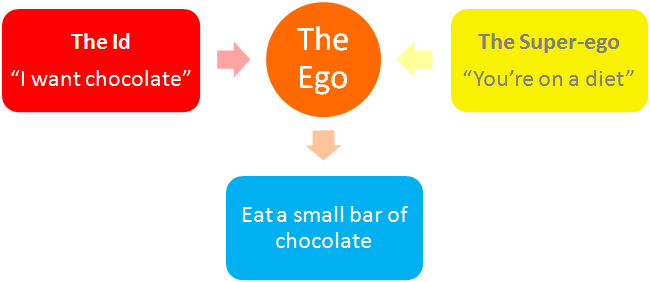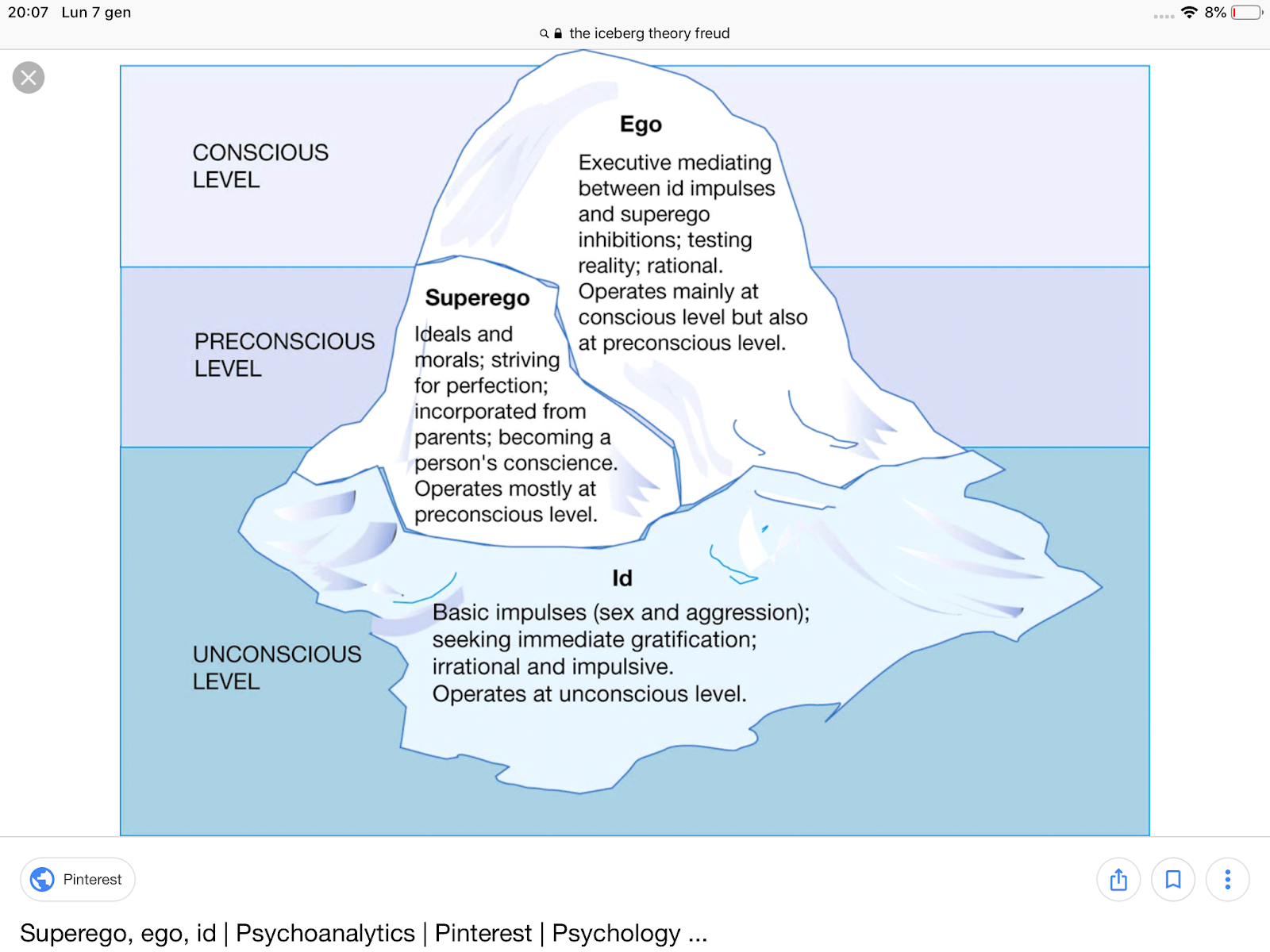

Some religious people have put forward the argument that superego is the part of a human in which God dwells. This is defined as a socially-induced conscience which counteracts the id, mainly in the aspects of moral and ethical thoughts. In a summary, this concept of ‘huge consciousness’ or ego strongly stands between variable swings of id and superego, thus balancing an individual’s primitive needs and moral beliefs.Īdditionally, a healthy ego enhances the capacity of an individual to adapt to reality and interact with the outside world in a way which maintains a positive balance between other two sections of the human mind, explained by Freud as Id and Superego. These mechanisms are used when a certain internal drive is identified to threaten someone’s inner personality, create anxiety or build up dangerous situations which are usually original, unacceptable impulses, finding it hard to resurface. As a result of the constant struggle with impulses generated by id, the ego often tends to develop several defense mechanisms including repression, reaction formation, projection, regression, denial, rationalization, and sublimation. Id, which often involves the driving power of demanding satisfaction, is usually unacceptable to the superego and therefore the concept of ego has a huge responsibility in mediating these drives in order to implement appropriate or acceptable conditions. More importantly, ego should successfully interact with the above aspects and fulfill the fundamental function of adaptation, enforce the postponement of gratification of the drives and impulses of the id, until a time in which the targeted situation alters in a significant manner or a socially acceptable way to satisfy the drive is identified. Freud’s theory of psychoanalysis explains ego as a concept which mediates between the id (unconscious state), the superego (conscious state) and the external world in order to maintain a balance between most primitive drives, moral ideals, and taboos with some limitations of reality. What is the difference between Ego and SuperegoĮgo means ‘I’ in Latin and the original German word, applied by Freud is known to be ‘Ich.’ Ego is defined as a sense of self and a set of psychological functions like reality-testing, defense, synthesis of information and memory. What is Superego – Definition, Concept, and Characteristicsģ. What is Ego – Definition, Concept, and CharacteristicsĢ. This is the main difference between Ego and Superego.ġ. Ego can be simply defined as common sense and superego can be defined as the conscience. Additionally, the largely conscious ‘ego’ is known to be acting as a mediator between id ego and superego. Transactional analysis (TA) has been developed from this approach, and there are parallels between the id/ego/superego of psychoanalysis and the parent/adult/child ego states of TA.According to the theory of psychoanalysis, which was introduced by Sigmund Freud, who is considered the father of psychology, the human mind is divided into three different sections called “id,” the “ego,” and the “superego.” The unconscious state or ‘id’ is defined as humanity’s most primitive desires which act on satisfying individual biological needs whereas ‘superego’ involves the socially-induced conscience which counteracts id in the aspects of moral and ethical prohibitions.
/illo_id-ego-superego-599dc5e3c41244001354e25f.png)

Psychoanalysis aims to increase the client’s self-awareness and understanding of the influence of the past on present behaviour. Both were end products of a compromise between two sets of conflicting forces in the mind – between unconscious childhood sexual wishes seeking discharge and the repressive activity of the rest of the mind. Dreams and symptoms … had a similar structure. "The idea that dreams could be understood occurred to Freud when he observed how regularly they appeared in the associations of his neurotic patients.

Ego and superego free#
Various techniques in psychoanalysis support the exploration of these parts of the personality and the relationships between them.Įxamples are free association (‘asking the client to express, uncensored, all thoughts, feelings and images which enter his stream of consciousness’ – Feltham and Dryden, 1993: 70) and dream analysis.


 0 kommentar(er)
0 kommentar(er)
